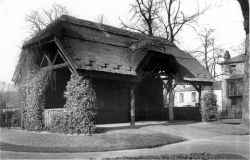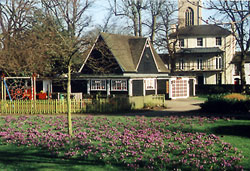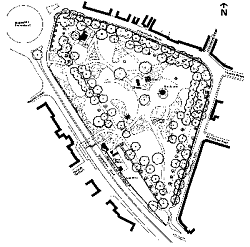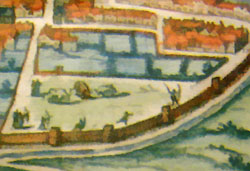History of Chapelfield
When the city walls were built in the 14th century they enclosed the field of St Mary’s Chapel, part of the monastery which stood where the Theatre Royal now is, hence the name Chapel Field. in later usage Chapelfield.
In this century the gardens that arose are commonly called Chapelfield Gardens.
Back in the 15th century archers trained there before Agincourt and the field was also used as a tourney ground. In 1580 the yeomanry were trained to resist invasion by the Spanish Armada.
In 1666 the field was used as a mass burial site for victims of the Great Plague.
The City of Norwich Water Company built a large reservoir there in 1792 but following an outbreak of cholera in the city the reservoir was abandoned in 1849. The reservoir was filled in and the City Corporation laid out the whole area as ornamental gardens. Opened in 1880 they remain in much the same form today.
The great iron pavilion formerly exhibited at the 1876 Paris and Philadelphia exhibitions was erected in the gardens in 1880. When it became unsafe through rust and neglect it was dismantled in 1949.

The Pavillion Chapelfield (courtesy - Norfolk Studies Library)
The Pavillion was a thatched timber building. A place to sit and watch the children play, and to shelter from the rain.The Pavillion was eventually replaced by a tea room, and today it is the popular Pedro’s, a Mexican-style restaurant.

Best to go there when hungry because the proportions are seriously large and the food is irresistably delicious.Next to Pedros is a charming toddlers playground with slide, swings and climbing things.

The large chess set was laid out in 1973.
 This map of Chapelfield Gardens in the 1980’s shows the triangular avenue of mature trees, the descendants of those planted in the 18th century by Sir Thomas Churchman. The western point of the garden was cut off to make the roundabout for the inner ring road. You can see the original line of the city wall marked in flint on the roundabout.
This map of Chapelfield Gardens in the 1980’s shows the triangular avenue of mature trees, the descendants of those planted in the 18th century by Sir Thomas Churchman. The western point of the garden was cut off to make the roundabout for the inner ring road. You can see the original line of the city wall marked in flint on the roundabout.

In 1999, sculptor Mark Goldsworthy carved an oak trunk to commemorate Will Kemp who danced, some said whored, his way from London to Norwich in 1599, a “nine daies wonder”. Great crowds greeted Kemp’s arrival in Norwich and the Mayor awarded him 40 shillings a year for life.


